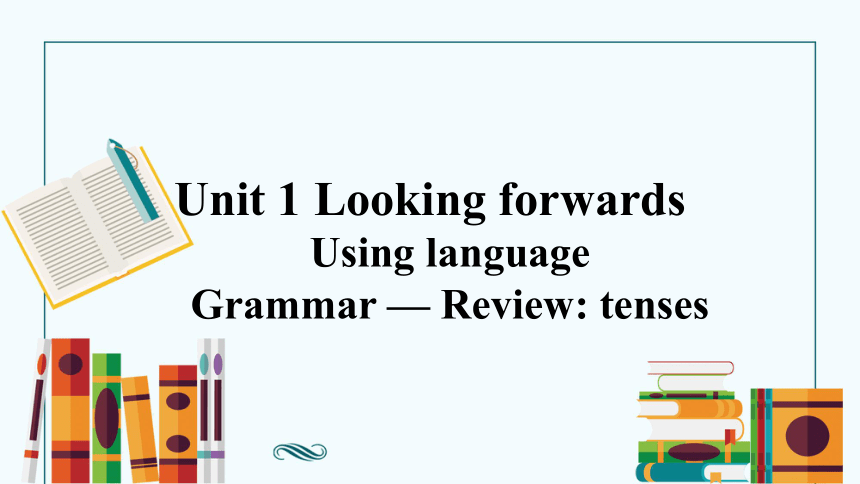(
课件网) Using language Grammar — Review: tenses Unit 1 Looking forwards Learning objectives 1. To review the usage of tenses 2. To use the tenses correctly Activity 1 Look at the sentences from the reading passage. Decide which tense each is in and match the tenses to what they describe. a. For many of us, it’s something we already have experienced. b. What will we be doing in ten years’ time c. He would later go on to win the Nobel Prize in Literature. d. ... the young Arthur Conan Doyle, born in Scotland in 1859, had originally worked as a doctor. e. ... Doyle wrote some of his early Holmes stories while he was waiting for patients in his medical practice in London. f. ... but Sherlock Holmes has been entertaining readers for well over a century. 1. An action completed in the past before another past action. 2. An action or event taking place over a particular period in the future. 3. An action that happened in a period of time up to the present. a b d 4. An action that started in the past and may still be going on or have just stopped. 5. An intended future action or event as seen from the past. 6. An on-going situation at or around a particular time in the past. f c e 1. What other tenses have you learnt Find examples in the reading passage. ①One moment, we are lying comfortably in bed, about to fall into a deep sleep. ②... we find ourselves wondering or even worrying about possibly the most important issue of our life ③Although they shared the same ambitious and energetic approach to life, ... (Present Continuous) (Present Simple) (Past Simple ) Now answer the questions. 2. What do these tenses describe Present Continuous: to talk about actions happening now or around now; to be used for future arrangements Present Simple: to be used for habits, permanent situations, and truth; to be used for the future for timetabled events, such as airplanes Past Simple: to describe events in the past 一般体 进行体 完成体 完成进行体 时态 一般现在时 一般过去时 一般将来时 过去将来时 现在进行时 过去进行时 将来进行时 现在完成时 过去完成时 现在完成进行时 1. 一般现在时的构成 一、一般现在时 一般现在时通常以动词原形表示,当主语是第三人称单数时,谓语一般由动词原形后加 -s 或 -es 构成。 2. 一般现在时的用法 ①表示经常性、习惯性的动作或存在的状态,常与频度副词及表示现在的时间状语连用。 always 总是 often 经常 usually 通常 sometimes 有时 on Sundays 每逢周日 every day / week / month / year 每天/周/月/年 once / twice a week 每周一/两次 ②表示主语目前的性格、特征、状态或能力等。 例如:He is a man of few words. 他是一个少言寡语的人。 She knows French and German besides English. 除了英语,她还会法语和德语。 ③ 表示客观事实、普遍真理及自然现象,或用在格言中。 例如:The earth goes around the sun. 地球绕着太阳转。 Failure is the mother of success. 失败是成功之母。 ④ 表示按规定、计划、安排、时间表等马上要发生的事情,常与具体的时间状语连用。该用法常用于火车时刻表、飞机航班时刻表,以及电影开演、作息、安排等时刻表上,且 ... ...

